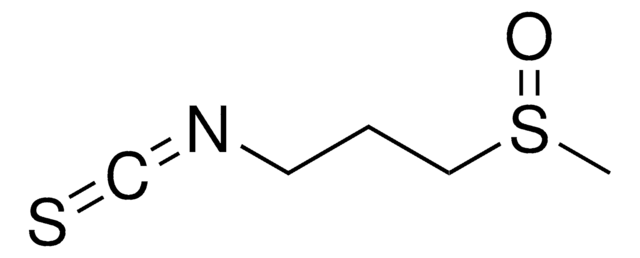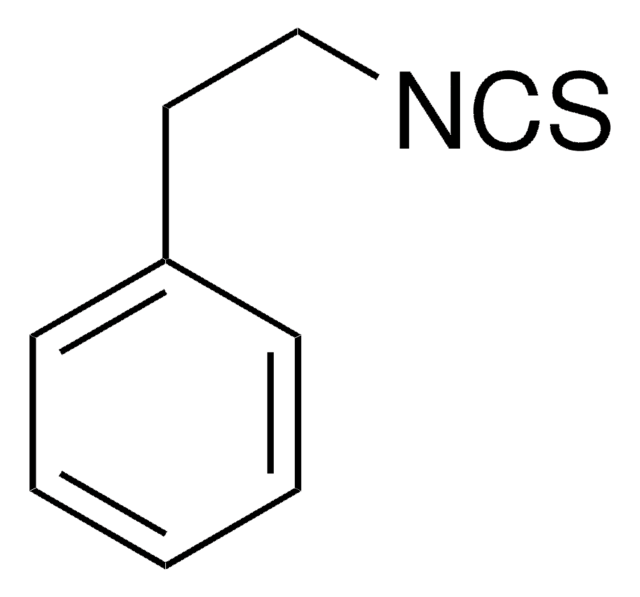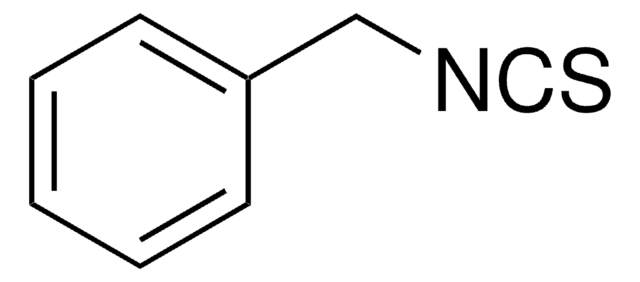Wichtige Dokumente
SML3434
Erucin
≥98% (HPLC)
Synonym(e):
(4-Isothiocyanatobutyl)(methyl)sulfane; 4-(Methylthio)butyl isothiocyanate, 1-Isothiocyanato-4-(methylthio)butane, ERU, MTBITC
About This Item
Empfohlene Produkte
Qualitätsniveau
Assay
≥98% (HPLC)
Form
oil
Farbe
colorless to yellow
Lagertemp.
-10 to -25°C
SMILES String
CSCCCCN=C=S
InChI
1S/C6H11NS2/c1-9-5-3-2-4-7-6-8/h2-5H2,1H3
InChIKey
IHQDGXUYTSZGOG-UHFFFAOYSA-N
Biochem./physiol. Wirkung
Signalwort
Danger
H-Sätze
Gefahreneinstufungen
Eye Dam. 1 - Skin Corr. 1B
Lagerklassenschlüssel
8A - Combustible corrosive hazardous materials
WGK
WGK 3
Flammpunkt (°F)
Not applicable
Flammpunkt (°C)
Not applicable
Hier finden Sie alle aktuellen Versionen:
Analysenzertifikate (COA)
It looks like we've run into a problem, but you can still download Certificates of Analysis from our Dokumente section.
Wenn Sie Hilfe benötigen, wenden Sie sich bitte an Kundensupport
Besitzen Sie dieses Produkt bereits?
In der Dokumentenbibliothek finden Sie die Dokumentation zu den Produkten, die Sie kürzlich erworben haben.
Unser Team von Wissenschaftlern verfügt über Erfahrung in allen Forschungsbereichen einschließlich Life Science, Materialwissenschaften, chemischer Synthese, Chromatographie, Analytik und vielen mehr..
Setzen Sie sich mit dem technischen Dienst in Verbindung.








